|
|
|
|
|
Oil On
Canvas, Real Flavor of Old Masters
|
|

|
ARTWORKS
INDEX
A B C D E F G H I J K L M N O P Q R S T U V W X Y Z |
ARTISTS
INDEX
A B C D E F G H I J K L M N O P Q R S T U V W X Y Z |
|
|
| | |
|
|
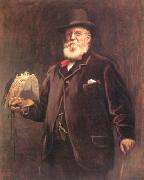 |
Joseph Wolf -- Click Here
|
|
(January 22, 1820 - April 20, 1899) was a German artist who specialized in natural history illustration. He moved to the British Museum in 1848 and became the choice of illustrator for numerous explorers and collectors. He depicted animals accurately in life-like postures and has been considered one of the great pioneers of wildlife art. Sir Edwin Landseer considered him ...without exception, the best all-round animal artist who ever lived.
Wolf was the son of a farmer, and was born in Mörz near Menstermaifeld, not far from the river Moselle, in the Eifel region. In his boyhood he was an assiduous student of bird and animal life, and showed a remarkable capacity as a draughtsman of natural history subjects.
At the age of sixteen he went to Koblenz to work for a firm of lithographers, and then in 1840 he moved to Frankfurt. Here he provided the illustrations for Eduard Reppell's Birds of Northeast Africa. |
|
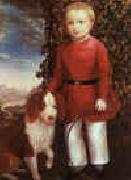 |
Joseph Whiting Stock -- Click Here
|
|
1815-1855
American painter. He was physically handicapped and confined to his house until his doctor advised a wheelchair, which, when placed on a railway carriage, allowed him to travel. He took painting lessons as therapy from Franklin White, a pupil of Chester Harding, and became proficient as an artist. This enabled him to make a living painting portraits, landscapes and miniatures throughout New England and part of New York State. He kept a journal that lists 912 examples of his work executed between 1832 and 1846, with the names of his sitters, canvas sizes, the prices charged and where the pictures were painted. No examples of his landscapes have survived and only a few of his 80 miniatures have been located. The earliest miniatures date from 1836, but most were executed in 1842 and 1845 when he lived in New Bedford, MA. Few American primitive artists of the 19th century were as productive as Stock. |
|
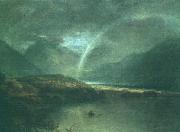 |
Joseph Mallord William Turner -- Click Here
|
|
English Romantic Painter, 1775-1851
Joseph Mallord William Turner (23 April 1775 ?C 19 December 1851) was an English Romantic landscape painter, watercolourist and printmaker, whose style is said to have laid the foundation for Impressionism. Although Turner was considered a controversial figure in his day, he is now regarded as the artist who elevated landscape painting to an eminence rivalling history painting.
Turner's talent was recognised early in his life. Financial independence allowed Turner to innovate freely; his mature work is characterised by a chromatic palette and broadly applied atmospheric washes of paint. According to David Piper's The Illustrated History of Art, his later pictures were called "fantastic puzzles." However, Turner was still recognised as an artistic genius: the influential English art critic John Ruskin described Turner as the artist who could most "stirringly and truthfully measure the moods of Nature." (Piper 321)
Suitable vehicles for Turner's imagination were to be found in the subjects of shipwrecks, fires (such as the burning of Parliament in 1834, an event which Turner rushed to witness first-hand, and which he transcribed in a series of watercolour sketches), natural catastrophes, and natural phenomena such as sunlight, storm, rain, and fog. He was fascinated by the violent power of the sea, as seen in Dawn after the Wreck (1840) and The Slave Ship (1840).
Turner placed human beings in many of his paintings to indicate his affection for humanity on the one hand (note the frequent scenes of people drinking and merry-making or working in the foreground), but its vulnerability and vulgarity amid the 'sublime' nature of the world on the other hand. 'Sublime' here means awe-inspiring, savage grandeur, a natural world unmastered by man, evidence of the power of God - a theme that artists and poets were exploring in this period. The significance of light was to Turner the emanation of God's spirit and this was why he refined the subject matter of his later paintings by leaving out solid objects and detail, concentrating on the play of light on water, the radiance of skies and fires. Although these late paintings appear to be 'impressionistic' and therefore a forerunner of the French school, Turner was striving for expression of spirituality in the world, rather than responding primarily to optical phenomena.
Rain, Steam and Speed - The Great Western Railway painted (1844).His early works, such as Tintern Abbey (1795), stayed true to the traditions of English landscape. However, in Hannibal Crossing the Alps (1812), an emphasis on the destructive power of nature had already come into play. His distinctive style of painting, in which he used watercolour technique with oil paints, created lightness, fluency, and ephemeral atmospheric effects. (Piper 321)
One popular story about Turner, though it likely has little basis in reality, states that he even had himself "tied to the mast of a ship in order to experience the drama" of the elements during a storm at sea.
In his later years he used oils ever more transparently, and turned to an evocation of almost pure light by use of shimmering colour. A prime example of his mature style can be seen in Rain, Steam and Speed - The Great Western Railway, where the objects are barely recognizable. The intensity of hue and interest in evanescent light not only placed Turner's work in the vanguard of English painting, but later exerted an influence upon art in France, as well; the Impressionists, particularly Claude Monet, carefully studied his techniques. |
|
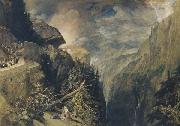 |
Joseph Mallord William Truner -- Click Here
|
|
born: London, England; 23 April 1775 died: London, England; 19 December
1851. |
|
|
|
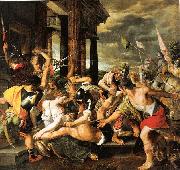 |
Joos van Winghe -- Click Here
|
|
(1544, Brussels - 1603, Frankfurt), was a Flemish Renaissance painter.
According to Karel van Mander he was born in Brussels in 1544 and travelled to Rome where he lived with a Cardinal for four years. When he returned to Brussels he became court painter to the Prince of Parma until he left the country in 1584 as a consequence of the Fall of Antwerp. He settled in Frankfurt and his place at Parma's court was taken by Otto van Veen. He died in 1603, aged 61. Van Mander mentions several pieces by his hand in Brussels, Frankfurt, and Amsterdam.
According to the RKD who spent four years travelling in Rome, Parma, and Paris before returning to Brussels in 1568. In 1585 he moved to Frankfurt, where he became a citizen (burgher) in 1588 and stayed. He was the father of the painter Jeremias van Winghe, and is known for portraits and genre works, as well as book title pages. |
|
 |
johnwilliam waterhouse,R.A. -- Click Here
|
|
English Pre-Raphaelite Painter, 1849-1917 |
|
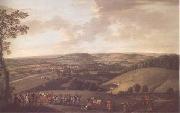 |
John Wootton -- Click Here
|
|
1682 - 1764
English painter. He probably received some instruction from Jan Wyck in the 1690s, and he was possibly patronized from an early age by the aristocratic households of Beaufort and Coventry (as was Wyck), perhaps while working as a page to Lady Anne Somerset at Snitterfield House, Warwicks. However, there seems to be no real evidence for this save his early painted view of the house and the family's later acquisition of many of his works. Joseph Farington saw a painting of Diana and the Nymphs (1707; untraced) at Antony House, Cornwall, but Wootton's earliest extant dated work is the horse portrait Bonny Black (1711; Belvoir Castle, Leics). By this time he had begun to establish himself in London, having moved there before his first marriage, to Elizabeth Walsh, in 1706. |
|
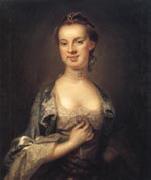 |
John Wollaston -- Click Here
|
|
English-born American Rococo Era Painter, active 1742-1775 |
|
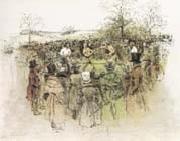 |
John Wolcott Adams -- Click Here
|
|
American Illustrator
1874-1925
|
|
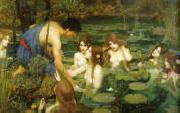 |
John William Waterhouse -- Click Here
|
|
English Pre-Raphaelite Painter, 1849-1917
English painter. His father was a minor English painter working in Rome. Waterhouse entered the Royal Academy Schools in London in 1870. He exhibited at the Society of British Artists from 1872 and at the Royal Academy from 1874. From 1877 to the 1880s he regularly travelled abroad, particularly to Italy. In the early 1870s he had produced a few uncharacteristic Orientalist keepsake paintings, but most of his works in this period are scenes from ancient history or classical genre subjects, similar to the work of Lawrence Alma-Tadema (e.g. Consulting the Oracle, c. 1882; London, Tate). However, Waterhouse consistently painted on a larger scale than Alma-Tadema. His brushwork is bolder, his sunlight casts harsher shadows and his history paintings are more dramatic. |
|
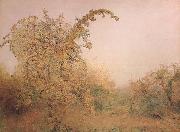 |
John William North,ARA,RWS -- Click Here
|
|
1842-1924
|
|
|
|
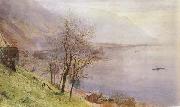 |
John William Inchbold -- Click Here
|
|
1830-1888
English painter. He spent his early years in Leeds, where his father was a newspaper proprietor, but came to London around 1846 to study lithography in the firm of Day & Haghe. His obituary in The Athenaeum records that he went on to study at the Royal Academy Schools, but his name does not appear in the registers. He exhibited watercolours at the Society of British Artists in 1849 and 1850 and at the Royal Academy in 1851. At this period his work has a fluidity and a freedom of handling that is closer to Richard Parkes Bonington than to the prevailing style of Victorian watercolours. Around 1852 he came under the influence of the Pre-Raphaelite movement and radically altered his style. His oil painting of the Chapel, Bolton (exh. RA 1853; Northampton, Cent. Mus. & A.G.) is a meticulously rendered view of the abbey ruins in the Pre-Raphaelite manner. This was followed the next year by At Bolton (Leeds, C.A.G.), another view of Bolton Abbey, this time with a deer prominent in the foreground. Both paintings illustrate lines from William Wordsworth's poem 'The White Doe of Ryleston'. Wordsworth was also the inspiration for the small painting Study in March |
|
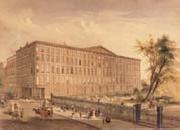 |
John William Hill -- Click Here
|
|
English Painter, 1812-1879,Painter and illustrator, son of John Hill. At the age of seven he moved to Philadelphia, PA, with his family. In 1822 he moved to New York, where he was apprenticed to his father for seven years. During this time, he worked on the aquatint plates for William Guy Wall's Hudson River Portfolio (1821-5), which influenced his early paintings. |
|
 |
John William Godward -- Click Here
|
|
English
1861-1922
Godward was a Victorian Neo-classicist, and therefore a follower in theory of Frederic Leighton. However, he is more closely allied stylistically to Sir Lawrence Alma-Tadema, with whom he shared a penchant for the rendering of Classical architecture, in particular, static landscape features constructed from marble.
The vast majority of Godward's extant images feature women in Classical dress, posed against these landscape features, though there are some semi-nude and fully nude figures included in his oeuvre (a notable example being In The Tepidarium (1913), a title shared with a controversial Alma-Tadema painting of the same subject that resides in the Lady Lever Art Gallery). The titles reflect Godward's source of inspiration: Classical civilisation, most notably that of Ancient Rome (again a subject binding Godward closely to Alma-Tadema artistically), though Ancient Greece sometimes features, thus providing artistic ties, albeit of a more limited extent, with Leighton.
Given that Classical scholarship was more widespread among the potential audience for his paintings during his lifetime than in the present day, meticulous research of detail was important in order to attain a standing as an artist in this genre. Alma-Tadema was, as well as a painter, an archaeologist who attended historical sites and collected artefacts that were later used in his paintings: Godward, too, studied such details as architecture and dress, in order to ensure that his works bore the stamp of authenticity. In addition, Godward painstakingly and meticulously rendered those other important features in his paintings, animal skins (the paintings Noon Day Rest (1910) and A Cool Retreat (1910) contain superb examples of such rendition) and wild flowers (Nerissa (1906), illustrated above, and Summer Flowers (1903) are again excellent examples of this).
The appearance of beautiful women in studied poses in so many of Godward's canvases causes many newcomers to his works to categorise him mistakenly as being Pre-Raphaelite, particularly as his palette is often a vibrantly colourful one. However, the choice of subject matter (ancient civilisation versus, for example, Arthurian legend) is more properly that of the Victorian Neoclassicist: however, it is appropriate to comment that in common with numerous painters contemporary with him, Godward was a 'High Victorian Dreamer', producing beautiful images of a world which, it must be said, was idealised and romanticised, and which in the case of both Godward and Alma-Tadema came to be criticised as a world-view of 'Victorians in togas'. |
|
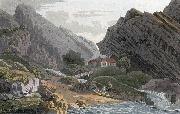 |
John William Edy -- Click Here
|
|
John William Edy (1760 - 1820) was an English painter. He worked for the publisher John Boydell in London, often anonymously. In the summer of 1800 Edy visited Norway on an assignment for Boydell together with the landscape painter William Fearnside. They were in Norway from July 31 and until the end of September the same year.
|
|
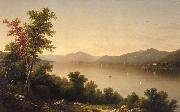 |
John William Casilear -- Click Here
|
|
(June 25, 1811 - August 17, 1893) was an American landscape artist belonging to the Hudson River School.
Casilear was born in New York City. His first professional training was under prominent New York engraver Peter Maverick in the 1820s, then with Asher Durand, himself an engraver at the time. Casilear and Durand became friends, and both worked as engravers in New York through the 1830s.
By the middle 1830s Durand had become interested in landscape painting through his friendship with Thomas Cole. Durand, in turn, drew Casilear's attention to painting. By 1840 Casilear's interest in art was sufficiently strong to accompany Durand, John Frederick Kensett, and artist Thomas P. Rossiter on a European trip during which they sketched scenes, visited art museums, and fostered their interest in painting.
Casilear gradually developed his talent in landscape art, painting in the style that was later to become known as the Hudson River School. By the middle 1850s he had entirely ceased his engraving career in favor of painting full-time. He was elected a full member of the National Academy of Design in 1851, having been an associate member since 1831, and exhibited his works there for over fifty years.
Casilear died in Saratoga Springs, New York in 1893. |
|
 |
John White Alexander -- Click Here
|
|
1865-1915
John White Alexander Galleries
Alexander was born in Allegheny, Pennsylvania, now a part of Pittsburgh, Pennsylvania. Orphaned in infancy, he was reared by his grandparents and at the age of 12 became a telegraph boy in Pittsburgh. His talent at drawing attracted the attention of one of his employers, who assisted him to develop them. He moved to New York at the age of eighteen and worked in an office at Harper's Weekly, where he was an illustrator and political cartoonist at the same time that Abbey, Pennell, Pyle, and other celebrated illustrators labored there. After an apprenticeship of three years, he travelled to Munich for his first formal training. Owing to the lack of funds, he removed to the village of Polling, Bavaria, and worked with Frank Duveneck. They travelled to Venice, where he profited by the advice of Whistler, and then he continued his studies in Florence, the Netherlands, and Paris.
In 1881 he returned to New York and speedily achieved great success in portraiture, numbering among his sitters Oliver Wendell Holmes, John Burroughs, Walt Whitman, Henry G. Marquand, R. A. L. Stevenson, and president McCosh of Princeton University. His first exhibition in the Paris Salon of 1893 was a brilliant success and was followed by his immediate election to the Soci??t?? Nationale des Beaux Arts. Many additional honors were bestowed on him. In 1901 he was named Chevalier of the Legion of Honor, and in 1902 he became a member of the National Academy of Design. He was a member of the American Academy of Arts and Letters. Among the gold medals received by him were those of the Paris Exposition (1900) and the World's Fair at St. Louis (1904).
Many examples of his paintings are on display in museums and public places in the United States and in Europe, including the Metropolitan Museum of Art, the Brooklyn Art Museum, the Los Angeles County Museum of Art, the Museum of Fine Arts, Boston, the Butler Institute, and the Library of Congress in Washington D.C. In addition, in the entrance hall to the Art Museum of the Carnegie Institute in Pittsburgh, a series of Alexander's murals entitled "Apotheosis of Pittsburgh" (1905-1907) covers the walls of the three-storey atrium area.
Alexander was married to Elizabeth Alexander Alexander, to whom he was introduced in part because of their shared last name. Elizabeth was the daughter of James Waddell Alexander, President of the Equitable Life Assurance Society at the time of the Hyde Ball scandal. The Alexanders had one child, the mathematician James Waddell Alexander II.
Alexander's original and highly individual art is based upon a very personal interpretation of humanity. He died in New York. |
|
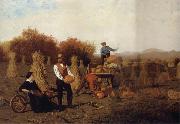 |
John Whetten Ehninger -- Click Here
|
|
American Painter, 1827-1889,American painter and illustrator. After graduating from Columbia College, New York, in 1847, he immediately departed for Europe to pursue artistic training. He visited Italy and France, but staying in Germany, specifically D?sseldorf, was his main objective. There he studied with Karl Friedrich Lessing, Carl Ferdinand Sohn and fellow American Emanuel Leutze, and in Paris he was instructed by Thomas Couture. During the early 1850s he travelled between America and Europe but finally settled in New York in 1853 until his move to Saratoga Springs after marrying in 1877. Ehninger exhibited regularly at the National Academy of Design, New York, where he was elected a full member in 1860. |
|
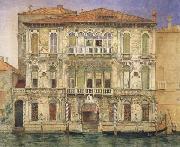 |
John wharlton bunney -- Click Here
|
|
1828-1882
was an English topographical and landscape artist of the nineteenth century. His father was a merchant captain whom Bunney, as a boy, accompanied on several voyages around the world. Bunney demonstrated a strong talent for drawing and draftsmanship from an early age. The young Bunney became a follower of John Ruskin; he studied with Ruskin at the Working Men's College soon after its founding in 1854, and later worked as a clerk for Smith, Elder & Co., Ruskin's publisher. Bunney was able to give up his clerical job and make his living by his art and art teaching by 1859; Ruskin commissioned him to execute a series of drawings in Italy and Switzerland.Bunney married Elizabeth Fallon in 1863. The couple settled in Florence; they would have four children. Bunney worked for Ruskin's St. George's Company (later the Guild of St George) in northern Italy for the remainder of his life. In his career there, Bunney produced a noteworthy pictorial record of Italy in his era. Ruskin said that Bunney's work was "so faithful and careful as almost to enable the spectator to imagine himself on the spot." Bunney was a friend of many of the Pre-Raphaelites, especially William Holman Hunt. From 1870 on, Bunney lived and painted in Venice. In 1876 Ruskin commissioned Bunney to paint a picture that included the entire western facade of St. Mark's Basilica |
|
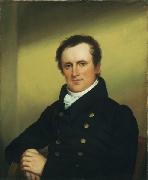 |
John Wesley Jarvis -- Click Here
|
|
(1781 - January 14, 1839), American painter, nephew of Methodist leader John Wesley, was born at South Shields, England, and was taken to the United States at the age of five.
He was one of the earliest American painters to give serious attention to the study of anatomy. He lived at first in Philadelphia, afterwards establishing himself in New York City, where he enjoyed great popularity, though his conviviality and eccentric mode of life affected his work. He visited Baltimore, Charleston, and New Orleans, entertaining much and painting portraits of prominent people, particularly in New Orleans, where General Andrew Jackson was one of his sitters. He had for assistants at different times both Thomas Sully and Henry Inman. He affected singularity in dress and manners, and his mots were the talk of the day. But his work deteriorated, and he died in great poverty in New York City. |
|
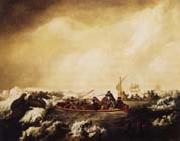 |
John Webber -- Click Here
|
|
(1751-1793), Landscape painter, was an English artist best known for his images of early Alaska and Hawaii. Webber was born on October 6, 1751 in London, educated in Switzerland and studied painting at Paris[2]. Webber served as official artist on Captain James Cook??s third voyage of discovery around the Pacific (1776-1780) aboard HMS Resolution. At Adventure Bay in January 1777 he did drawings of "A Man of Van Diemen's Land" and "A Woman of Van Diemen's Land". He also did many drawings of scenes in New Zealand and the South Sea islands. On this voyage, during which Cook lost his life in a fight in Hawaii, Webber became the first European artist to make contact with Hawaii, then called the Sandwich Islands. He made numerous watercolor landscapes of the islands of Kauai and Hawaii, and also portrayed many of the Hawaiian people. Back in England in 1780 Webber exhibited around 50 works at Royal Academy exhibitions between 1784 and 1792, and was elected an associate of the Royal Academy in 1785 and R.A. in 1791. Most of his work were landscapes. Sometimes figures were included as in "A Party from H.M.S. Resolution shooting sea horses", which was shown at the academy in 1784, and his "The Death of Captain Cook" became well known through an engraving of it. Another version of this picture is in the William Dixson gallery at Sydney. Webber died in London in 1793. |
|
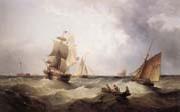 |
John ward of hull -- Click Here
|
|
British, 1798-1849 |
|
|
|
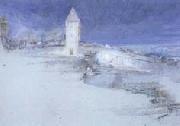 |
John Ruskin,HRWS -- Click Here
|
|
1819-1900
English academic and critic, who had an enormous influence not only on architectural style but on the ways in which standards of aesthetics were judged. He used an Evangelical and polemical tone in his writings that not only reached a mass audience but received the approval of the Ecclesiologists. Initially encouraged by J. C. Loudon, he contributed to some of Loudon's publications, but his key works date from the late 1840s and 1850s. The Gothic Revival was well established when Ruskin published The Seven Lamps of Architecture (1849), which was an immediate success, encapsulating the mood of the period rather than creating new ideas. He argued that architecture should be true, with no hidden structure, no veneers or finishes, and no carvings made by machines, and that Beauty in architecture was only possible if inspired by nature. As exemplars worthy of imitation (he argued that the styles known to Man were quite sufficient, and that no new style was necessary) he selected Pisan Romanesque, early Gothic of Western Italy, Venetian Gothic, and English early Second Pointed as his paradigms. In the choice of the last, the style of the late C13 and early C14, he was echoing A. W. N. Pugin's preferences as well as that of most ecclesiologically minded Gothic Revivalists such as G. G. Scott. The Stones of Venice (1851C3) helped to promote that phase of the Gothic Revival in which Continental (especially Venetian) Gothic predominated. Deane and Woodward's University Museum, Oxford (1854C60), is an example of Venetian or Ruskinian Gothic. In particular, structural polychromy, featuring colour in the material used, rather than applied, was popularized by Ruskin's writings. |
|
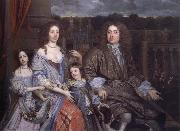 |
John Michael Wright -- Click Here
|
|
English Baroque Era Painter, ca.1617-1694,was a British baroque portrait painter. Wright trained in Edinburgh under the Scots painter George Jamesone, and acquired a considerable reputation as an artist and scholar during a long sojourn in Rome. There he was admitted to the Accademia di San Luca, and was associated with some of the leading artists of his generation. He was engaged by Archduke Leopold Wilhelm of Austria, the governor of the Spanish Netherlands, to acquire artworks in Oliver Cromwell's England in 1655. He took up permanent residence in England from 1656, and served as court painter before and after the English Restoration. A convert to Roman Catholicism, he was a favourite of the restored Stuart court, a client of both Charles II and James II, and was a witness to many of the political manoeuvrings of the era. In the final years of the Stuart monarchy he returned to Rome as part of an embassy to Pope Innocent XI. Wright is currently rated as one of the leading indigenous British painters of his generation and largely for the distinctive realism in his portraiture. Perhaps due to the unusually cosmopolitan nature of his experience, he was favoured by patrons at the highest level of society in an age in which foreign artists were usually preferred. Wright's paintings of royalty and aristocracy are included amongst the collections of many leading galleries today. |
|
|
|
|
|
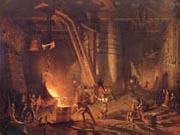 |
John Ferguson Weir -- Click Here
|
|
American painter and sculptor.
1841-1926
Painter, teacher and sculptor, son of Robert Walter Weir. He grew up at the US Military Academy at West Point, where he was taught by his father. His earliest paintings record the handsome landscape of the surrounding countryside, including View of the Highlands from West Point (1862; New York, NY Hist. Soc.). By November 1862 Weir had settled in New York, occupying quarters in the Studio Building on West Tenth Street, where he became friendly with many of the well-known artists residing there. He also made important contacts through the Century Club and the Athenaeum Club and the Artists' Fund Society. He made his d?but at the National Academy of Design with an Artist's Studio (1864; Los Angeles, CA, Co. Mus. A.), a detailed view of his father's painting room at West Point. The picture's favourable reception led to his election as an Associate of the National Academy of Design. |
|
|
|
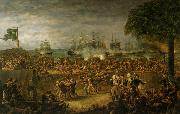 |
John Blake White -- Click Here
|
|
(1781 - 1859).
painted The Battle of Fort Moultrie in 1826 |
|
 |
John warwick smith -- Click Here
|
|
English Painter, 1749-1831
English painter. The son of a gardener to the Gilpin family, he studied under the animal painter Sawrey Gilpin. During a trip to Derbyshire with Gilpin he met George Greville, 2nd Earl of Warwick, who gave him financial support to go to Italy between 1776 and 1781. Smith spent 1778-9 in Naples and was otherwise based in Rome, where he explored the Campagna and made sketches with William Pars and Francis Towne. The strong greens and purples and crisp pen outlines of some of Smith's watercolours are strongly influenced by Towne's style. Smith and Towne travelled together across the Alps on their way back to England in 1781, after which Smith settled in Warwick. He contributed six views to Samuel Middiman's Select Views in Great Britain (1784-5) and between 1784 and 1806 toured Wales 13 times in search of Picturesque and Sublime scenery. He also visited the Lake District between 1789 and 1792, which resulted in the publication of Twenty Views of the Lake District (1791-5); he appears to have been in Devon and Worcestershire as well. Aquatints after Smith were used to illustrate William Sotheby's Tour through Parts of Wales (1794), |
|
|
|
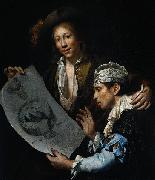 |
Johannes van Wijckersloot -- Click Here
|
|
Johan Hendriksz Van Wijckersloot (1557- 1602)
Born in Utrecht, Utrecht, Netherlands on 20 Oct 1557 to Hendrick Roelofsz Van Wijckersloot and Antonia Gosina Van Benthem. He passed away on 27 Jul 1602 in Utrecht, Utrecht, Netherlands |
|
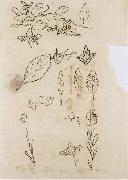 |
Johann Wolfgang von Goethe -- Click Here
|
|
Frankfurt 1749-1832 Weimar,was a German writer and according to George Eliot, "Germany's greatest man of letters and the last true polymath to walk the earth." Goethe's works span the fields of poetry, drama, literature, theology, humanism and science. Goethe's magnum opus, lauded as one of the peaks of world literature, is the two-part drama Faust. Goethe's other well-known literary works include his numerous poems, the Bildungsroman Wilhelm Meister's Apprenticeship and the epistolary novel The Sorrows of Young Werther. Goethe was one of the key figures of German literature and the movement of Weimar Classicism in the late 18th and early 19th centuries; this movement coincides with Enlightenment, Sentimentality (Empfindsamkeit), Sturm und Drang and Romanticism. The author of the scientific text Theory of Colours, he influenced Darwin with his focus on plant morphology. He also served at length as the Privy Councilor ("Geheimrat") of the duchy of Weimar. Goethe is the originator of the concept of Weltliteratur ("world literature"), having taken great interest in the literatures of England, France, Italy, classical Greece, Persia, Arabic literature, amongst others. His influence on German philosophy is virtually immeasurable, having major effect especially on the generation of Hegel and Schelling, although Goethe himself expressly and decidedly refrained from practicing philosophy in the rarefied sense. Goethe's influence spread across Europe, and for the next century his works were a major source of inspiration in music, drama, poetry and philosophy. Goethe is considered by many to be the most important writer in the German language and one of the most important thinkers in Western culture as well. |
|
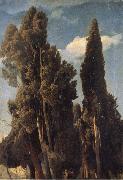 |
Johann Wilhelm Schirmer -- Click Here
|
|
Julich 1807-1863 Karlsruhe,was a German landscape artist from Julich, within the Prussian Duchy of Julich. The artist, a namesake of Friedrich Wilhelm Schirmer, had a similar aim and career. He first was a student, and subsequently became a professor in the academy of Dusseldorf. He became known as one of the first of the so-called Dusseldorf landscape school. In 1854 he was made director of the art school at Karlsruhe, where he died. |
|
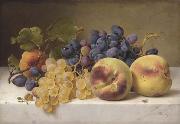 |
Johann Wilhelm Preyer -- Click Here
|
|
painted A Still Life with Peaches and Grapes on a Marble Ledge in 1803-1889 |
|
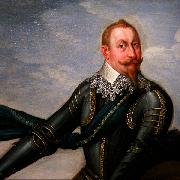 |
Johann Walter -- Click Here
|
|
painted Gustavus Adolphus of Sweden at the Battle of Breitenfeld in 1632 |
|
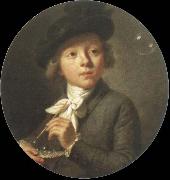 |
johann melchior wyrsch -- Click Here
|
|
johann melchior wyrsch (1732-98) was born in buochs, switzerland. in 1753 he went to rome to study with gaetano lapis and then at the academie francaise. |
|
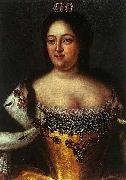 |
Johann Henrich Wedekind -- Click Here
|
|
painted Portrait of Empress Anna of Russia in 18th century
|
|
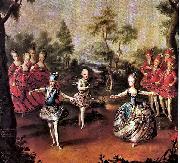 |
Johann Georg Weikert -- Click Here
|
|
Austria (1743 - 1799 ) - Painter. |
|
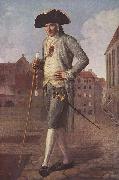 |
Johann Carl Wilck -- Click Here
|
|
Johann Carl Wilck (1772 - 1819) |
|
|
|
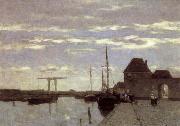 |
Johan Hendrik Weissenbruch -- Click Here
|
|
Dutch Painter, 1824-1903
Painter, cousin of Jan Weissenbruch. He referred to himself and signed his work as Jan Hendrik Weissenbruch. From 1840 he attended drawing lessons with the Norwegian painter Johannes Lew, and from 1846 he was taught by Bartholomeus J. van Hove at the Koninklijke Academie van Beeldende Kunsten in The Hague. His early paintings clearly show the influence of van Hove and Andreas Schelfhout, although it is uncertain whether he was actually taught by the latter. His father, an avid collector, owned works by both artists. |
|
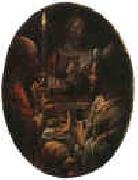 |
Joachim Wtewael -- Click Here
|
|
1566-1638 Flemish Joachim Wtewael Galleries
Dutch painter and draughtsman. He was one of the last exponents of MANNERISM. From c. 1590 until 1628, the year of his latest known dated paintings, he employed such typical Mannerist formal devices as brilliant decorative colour, contrived spatial design and contorted poses. He sometimes combined such artifice with naturalism, and this amalgam represents the two approaches Dutch 16th- and 17th-century theorists discussed as uyt den geest (from the imagination) and naer t leven (after life). Wtewaels activity reflects the transition from Mannerism to a more naturalistic style in Dutch art. Slightly over 100 of his paintings and about 80 drawings are known. Subjects from the Bible and mythology predominate; he also painted several portraits, including a Self-portrait (1601; Utrecht, Cent. Mus.). |
|
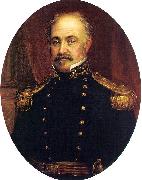 |
Jewett, William Smith -- Click Here
|
|
American, 1792-1874 |
|
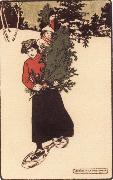 |
Jessie Willcox Smith -- Click Here
|
|
American Golden Age Illustrator, 1863-1935
was an American illustrator famous for her work in magazines such as Ladies Home Journal and for her illustrations for children's books. Born in the Mount Airy neighborhood of Philadelphia, Pennsylvania, Smith studied at the Pennsylvania Academy of the Fine Arts under Thomas Eakins in Philadelphia, graduating in 1888. A year later, she started working in the production department of the Ladies Home Journal, for five years. She left to take classes under Howard Pyle, first at Drexel and then at the Brandywine School. Jessie Willcox Smith, Illustration for The Water-Babies (1916)She was a prolific contributor to books and magazines during the late nineteenth and early twentieth centuries, illustrating stories and articles for clients such as Century, Collier's Weekly, Leslie's Weekly, Harper's, McClure's, Scribners, and the Ladies' Home Journal. Smith may be most well known for her covers on Good Housekeeping, which she painted from December 1917 through March 1933. She also painted posters and portraits. Her twelve illustrations for Charles Kingsley's The Water Babies (1916) are also well known. On Smith's death, she bequeathed the original works to the Library of Congress' "Cabinet of American Illustration" collection. Smith was close friends with the artists Elizabeth Shippen Green and Violet Oakley, |
|
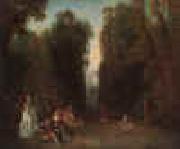 |
Jean-Antoine Watteau -- Click Here
|
|
1684-1721
Antoine Watteau Art Locations
He is best known for his invention of a new genre, the fete galante, a small easel painting in which elegant people are depicted in conversation or music-making in a secluded parkland setting (see under FETE CHAMPETRE). His particular originality lies in the generally restrained nature of the amorous exchanges of his characters, which are conveyed as much by glance as by gesture, and in his mingling of figures in contemporary dress with others in theatrical costume, thus blurring references to both time and place.
Watteau work was widely collected during his lifetime and influenced a number of other painters in the decades following his death, especially in France and England. His drawings were particularly admired. Documented facts about Watteau life are notoriously few, though several friends wrote about him after his death (see Champion). Of over two hundred paintings generally accepted as his work |
|
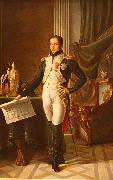 |
Jean Baptiste Wicar -- Click Here
|
|
Jean-Baptiste Wicar (22 January 1762, Lille - 27 February 1834, Rome) was a French Neoclassical painter and art collector.
The son of a carpenter, Wicar studied drawing at the free school in Lille before further honing his talents in the studio of David. The drawings Wicar created of Tableaux, statues, bas-reliefs et camees de la Galerie de Florence et du palais Pitti (Paintings, statues, bas-reliefs and cameos in the Gallery of Florence and the Pitti Palace) were published in Paris in 4 volumes at the Lacombe publishing house from 1789 to 1807.
Wicar headed the commission set up by Napoleon I of France to loot artworks from the Austrian Netherlands to enrich museums in France - an initial convoy left Antwerp on 11 August 1794, notably with paintings by Rubens, for the Louvre. Abbeys and castles were systematically emptied of their contents, furniture and works of art. Wicar was also a member of the commission des sciences et des arts on the Italian campaign, in the entourage of Bonaparte. This commission was charged with seizing artworks that could enrich French national museum collections. He finally permanently settled in Rome in 1800 and became a portraitist of European renown.
On his death in Rome, Wicar left the major collection of 1,300 drawings he had accumulated over his lifetime to the Societe des Sciences, de leAgriculture et des Arts de Lille. Mostly from the Italian school, but also in some small measure from the northern schools, it held drawings by artists like Raphael, Albrecht Derer, Lucas Cranach, Nicolas Poussin and Jacques-Louis David. |
|
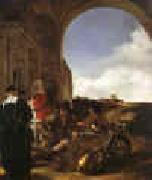 |
Jean Baptiste Weenix -- Click Here
|
|
1621-1660
Dutch |
|
 |
Jean antoine Watteau -- Click Here
|
|
French Rococo Era Painter, 1684-1721
He is best known for his invention of a new genre, the f?te galante, a small easel painting in which elegant people are depicted in conversation or music-making in a secluded parkland setting (see under F?TE CHAMP?TRE). His particular originality lies in the generally restrained nature of the amorous exchanges of his characters, which are conveyed as much by glance as by gesture, and in his mingling of figures in contemporary dress with others in theatrical costume |
|
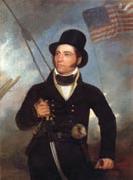 |
Jarvis John Wesley -- Click Here
|
|
English-born American Painter, ca.1780-1840 |
|
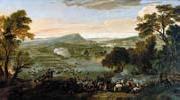 |
Jan Wyck -- Click Here
|
|
Dutch Baroque Era Painter, 1652-1700,Son of Thomas Wijck. A marriage certificate issued on 22 November 1676 describes the artist as 'Jan Wick of St Paul's Covent Garden, gent., widower, about 31 ...', suggesting that he was born c. 1645, but his correct birthdate is known from the inscription on a mezzotint portrait of him by John Faber II (1684-1756) after a painting by Sir Godfrey Kneller. Jan is first documented on 17 June 1674, when he appeared before the court of the Painter-Stainers' Company in London and vowed to pay both his own and his father's quarterly fees. The certificate of 1676 relates to his second marriage, to Ann Skinner (d 1687), who between 1678 and 1683 bore him four children, all of whom died young. After Ann's death in 1687, he married Elizabeth Holomberg (d 1693) in 1688 and moved to Mortlake. Between 1689 and 1693 they had two sons and a daughter.
|
|
|
|
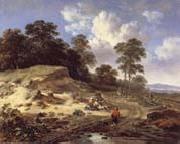 |
Jan Wijnants -- Click Here
|
|
Dutch, born circa 1635-1684,was a Dutch painter of the Baroque era. He was the son an art dealer also named Jan Wijnants. After his mother's death, his father remarried Maria Jans van Stralen, widow of Jasper Jaspersz van Heemskerck, and mother of the painter Egbert Jaspersz van Heemskerck, making Wijnant and Van Heemskerck stepbrothers. Wijnants was active in Haarlem until 1660, after which he moved to Amsterdam.
Wijnants is primarily known for his landscapes and paintings featuring topography. Adriaen van de Velde trained in his studio and his style later had influence on the English artist, Thomas Gainsborough. |
|
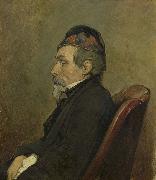 |
Jan Weissenbruch -- Click Here
|
|
painted Johan Hendrik Louis Meijer in 1850 - 1866
|
|
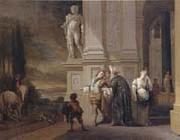 |
Jan Weenix -- Click Here
|
|
Dutch Baroque Era Painter ,
Amsterdam 1640/42-1719
Painter and draughtsman, son of (1) Jan Baptist Weenix. Jan probably received his first instruction as a painter from his father, and it is possible that he helped finish certain of his father's works. He probably remained in Utrecht after his father's death. By 1664 he had become a member of the Guild of St Luke in Utrecht without, however, having submitted the required entrance painting, which he provided by 1668. There are several documented references to Jan in the late 1660s. He inherited a legacy along with his uncle, the painter Barent Micker, and other family members in 1667, at which time Gillis, his younger brother, apparently still required a guardian. He received another legacy in 1668, the year of his marriage, and in 1669 served as a witness for the inventory of the painter Jacob de Hennin (1629-c. 1688) in The Hague. |
|
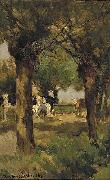 |
Jan Hendrik Weissenbruch -- Click Here
|
|
painted Milking cows underneath the willows in |
|
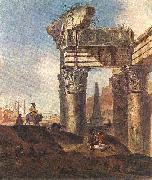 |
Jan Baptist Weenix -- Click Here
|
|
(Amsterdam, 1621- Vleuten 1660), a painter of the Dutch Golden Age. Despite his relatively brief career, he was a very productive and versatile painter. His favourite subjects were Italian landscapes with large figures among ruins, seaside views, and, later in life, large still life pictures of dead game or dogs. He was mainly responsible for introducing the Italian harbour scene into Dutch art, in mid-size paintings with a group of figures in the foreground.
Weenix was the son of an architect and born near Amsterdam's harbour. He could not speak well, apparently from a medical condition, and because he very much liked to read books, his mother sent him to work for a bookseller, who was not able to deal with him. He drew whenever he could, according to Jan Weenix his son, who told the story to Arnold Houbraken.
Weenix first studied under Jan Micker, then in Utrecht under Abraham Bloemaert, and later back in Amsterdam under Claes Cornelisz. Moeyaert. In 1643 Weenix travelled to Rome with Nicolaes Pieterszoon Berchem. He had left his home secretly, but his wife, the daughter of Gillis d'Hondecoeter, traced him to Rotterdam. Then he was allowed to stay away for four months. In Rome he became a member of the Bentvueghels and was much esteemed and worked for Pope Innocent X. He returned to Amsterdam after four years; his wife had refused to come to Rome.
In 1649 he became master of the guild of St. Luke in Utrecht and also painted a portrait of Rene Descartes. When his brother-in-law Gijsbert d'Hondecoeter died, he trained his nephew Melchior d'Hondecoeter, together with his own son Jan Weenix. Weenix moved to a castle outside Utrecht, to concentrate on his work or for health reasons, where he probably died in poor circumstances, at an unknown date.
He painted a few religious scenes, one of the rare pieces of this kind being the "Jacob and Esau" (Gemäldegalerie Alte Meister, Dresden). In the National Gallery, London, is a "Hunting Scene" by Weenix, and Glasgow has a characteristic painting of ruins. Weenix is represented at most of the important continental galleries, notably at Munich, Vienna, Berlin, Amsterdam, and St Petersburg.
|
|
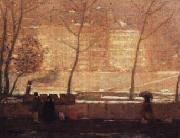 |
James Wilson Morrice -- Click Here
|
|
(August 10, 1865 Montreal - January 23, 1924 Tunis) was a significant Canadian landscape painter. He studied at the Academie Julian in Paris, France, where he lived for most of his career.
Morrice was the son of a wealthy merchant, and studied law in Toronto from 1882 to 1889. In 1890 he left to study painting in England. The next year he arrived in Paris, where he studied at the Academie Julian from 1892-7. At Julians he befriended Charles Conder and Maurice Prendergast, and also met Robert Henri.
Morrice continued to live in Paris until the First World War, although he spent most of his winters in Canada. He made many connections in the intellectual circles of Paris, while also remaining in touch with the Canadian art world:
|
|
|
|
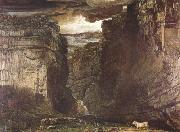 |
James Ward -- Click Here
|
|
English Romantic Painter, 1769-1859
English painter and engraver. He was the most important animal painter of his generation. Many of his dynamic compositions depict horses, dogs or wild animals in agitated emotional states, the sense of movement being reinforced by vigorous brushwork and strong colours. With their sweeping landscapes and dramatic skies, his canvases epitomize Romanticism. Not content to excel merely as an animal painter, Ward also produced portraits, landscapes and genre and history paintings of varying quality. |
|
|
|
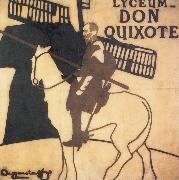 |
James Pryde and William Nicholson -- Click Here
|
|
James Pryde (1866-1941) was a Scottish artist working mainly in graphics.William Nicholson is English Painter, 1872-1949
|
|
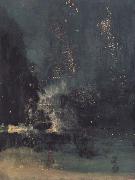 |
James Mcneill Whistler -- Click Here
|
|
American Painter and Printmaker, 1834-1903
James Abbott McNeill Whistler's deft brushwork and mighty ego made him one of London's best-known painters in the second half of the 1800s. Born in Massachusetts, Whistler spent most of his adult life in England and France, in an era when an American artist in Europe was something of a rarity. He specialized in landscapes and (especially later in his career) portraits; stylistically he is often linked with Claude Monet and August Renoir, though he was not exactly part of the Impressionist movement. His etchings also are highly regarded. Witty, cranky and a bit of a devil, Whistler was a regular gadabout in British society. He had a famous long-running feud with the playwright Oscar Wilde, each of them trying to outwit the other with cutting public remarks. Some critics of the era considered Whistler's work to be smudgy and too radical; after viewing Whistler's 1875 study of fireworks over the Thames, Nocturne in Black and Gold: the Falling Rocket, John Ruskin wrote: "I have seen, and heard, much of cockney impudence before now; but never expected to hear a coxcomb ask two hundred guineas for flinging a pot of paint in the public's face." Whistler successfully sued Ruskin for libel but was awarded only a farthing in damages, |
|
 |
James Abbott Mcneill Whistler -- Click Here
|
|
American Tonalist Painter and Printmaker, 1834-1903, He was an American-born, British-based artist. Averse to sentimentality and moral allusion in painting, he was a leading proponent of the credo "art for art's sake". His famous signature for his paintings was in the shape of a stylized butterfly possessing a long stinger for a tail. |
|
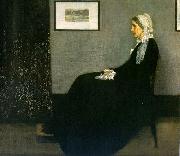 |
James Abbott McNeil Whistler -- Click Here
|
|
1834-1903
James Abbott McNeill Whistler Art Locations |
|
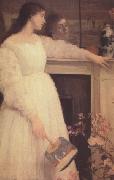 |
James Abbot McNeill Whistler -- Click Here
|
|
b Lowell MA 1834 d London 1903 |
|
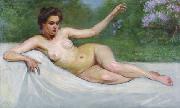 |
Jakub Weinles -- Click Here
|
|
Jakub Weinles (1870 - 1935) |
|
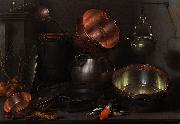 |
Jacob Willemsz. Delff -- Click Here
|
|
painted Allegory of the Four Elements. in 1600 |
|
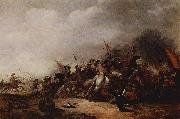 |
Jacob Weyer -- Click Here
|
|
painted Die Schlacht in 1630-1655
|
|
 |
Jacob Wessel -- Click Here
|
|
painted Portrait of Hieronim Florian Radziwiłł. in 1746 |
|
 |
Jacob de Wit -- Click Here
|
|
(19 December 1695 - 12 November 1754) was a Dutch artist and interior decorator who painted many religious scenes.
De Wit was born in Amsterdam, and became famous for his door and ceiling paintings. He lived on the Keizersgracht in Amsterdam, and many of the buildings on the Keizersgracht still have door or ceiling paintings done by him. Since many of the families who lived in Amsterdam in those days had country villas, de Wit also painted in houses in the fashionable areas of Haarlem and the Vecht river.
According to the RKD he was the pupil of Albert Spiers in Amsterdam and Jacob van Hal in Antwerp where he became a member of the Guild of St. Luke in 1714. His pupils were Jan de Groot (painter from The Hague), Dionys van Nijmegen, Jan Punt, Pieter Tanje, and the brothers Frans and Jacob Xavery. De Wit died in Amsterdam in 1754.Tako Hajo Jelgersma was his follower. |
|
|
|
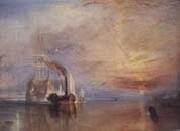 |
J.M.W.Turner -- Click Here
|
|
English Romantic Painter, 1775-1851, British land- and seascape artist. Born in London the son of a barber, Turner was precociously talented. He entered the RA Schools in 1789, had a drawing exhibited at the academy in 1790, and was elected a full academician in 1802. He became professor of perspective in 1807. A prolific artist of amazing range of subject and style, he began work in water-colours, quickly founding both a reputation and a fortune, which made him independent of changing public taste. His work was not appreciated by everyone, but his supporters included Thomas Lawrence, John Ruskin, and the earl of Egremont. He died in eccentric obscurity under a false name. |
|
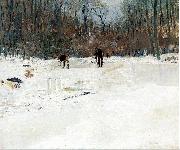 |
J. Alden Weir -- Click Here
|
|
(August 30, 1852 - December 8, 1919) was an American impressionist painter and member of the Cos Cob Art Colony near Greenwich, Connecticut. Weir was also one of the founding members of "The Ten", a loosely-allied group of American artists dissatisfied with professional art organizations, who banded together in 1898 to exhibit their works as a stylistically unified group.
|
|
 |
Isaac Whitehead -- Click Here
|
|
Australian
c.1819-1881
|
|
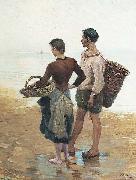 |
Ingeborg Westfelt-Eggertz -- Click Here
|
|
painted Morning - Trouville in 1855-1936 |
|
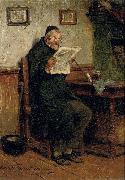 |
Hugo Wilhelm Kauffmann -- Click Here
|
|
(7 August 1844 - 30 December 1915) was a German painter, the son of Hermann Kauffmann.
Kauffmann was born in Hamburg. In 1861 he went to Frankfurt and worked there under Jakob Becker, Edward Jakob von Steinle and Johann Nepomuk Zwerger. From 1863-71 he lived in Kronberg in the Taunus. During this time he spent one winter in Hamburg and a five-month period in Desseldorf too; afterwards he spent 1½ years in Paris, until 1870 when the war drove him out. He lived until 1871 in Munich. He died in Prien at the Chiemsee in 1915.
|
|
|
|
|
| | |
|
|
|
|